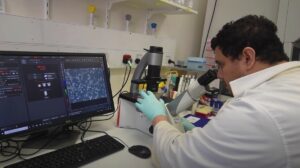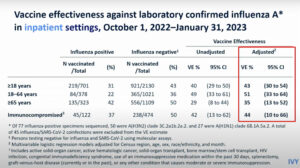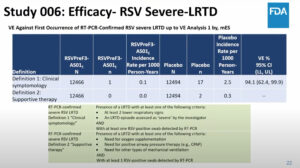NEW YORK (Reuters Health) – Managing food allergy in infants, children and adolescents is nothing short of challenging, for a whole host of reasons. A State-of-the-Art Review Article in the November issue of Pediatrics summarizes current U.S. guidelines for the diagnosis and management of food allergy that are most pertinent to the pediatric population.
“Food allergy is a very common problem in the first few years of life,” first author Dr. Wesley Burks, Chief and Professor, Pediatric Allergy and Immunology, Duke University Medical Center in Durham, North Carolina, noted in an email to Reuters Health.
“There are a number of important issues for patients and parents concerning food allergy where it is important to convey the best information to them,” he added.
Currently, no treatment for food allergy exists; managing the disease involves strict dietary avoidance of the offending allergen and treatment of symptoms. Diagnosis and management varies between health care settings.
In their paper, Dr. Burks and colleagues note that children at risk for food allergy have a biological parent or sibling with a history of allergic rhinitis, asthma, atopic dermatitis, or food allergy. Children at high risk have preexisting severe allergic disease, such as significant atopic dermatitis or asthma.
The guidelines state that children at risk for developing food allergy do not need to limit exposure to foods that may be cross-reactive with the 8 major food allergens in the United States (cow’s milk, egg, peanut, tree nuts, soy, wheat, fish, and crustacean shellfish), the authors note.
At present, there is insufficient evidence to recommend routine food allergy testing before introducing these highly allergenic foods. On the other hand, there “may be value” in food allergy testing for patients with certain risk factors, such as a sibling with peanut allergy or evidence of another specific food allergy, Dr. Burks and colleagues say.
“Although conclusive data on the subject are lacking, if a child is younger than 5 years and has persistent atopic dermatitis, there can be benefit to determining whether the child is allergic to a food,” they note.
The guidelines also state that, in general, restricting maternal diet during pregnancy or lactation is not recommended as a strategy for preventing the development or clinical course of food allergy.
“Because of the benefits of breastfeeding, it is recommended that all infants, including those with a family history of atopic disease, be exclusively breastfed until 4 to 6 months of age unless breastfeeding is contraindicated for medical reasons,” the authors note.
In their paper, Dr. Burks and colleagues provide an overview of when to suspect and how to diagnose IgE-mediated and non-IgE-mediated food allergy in children.
In children with documented IgE-mediated or non-IgE-mediated food allergy, they’ll need help avoiding the offending allergen(s). “Carefully planned allergen-free diets can provide sufficient nutrients to maintain a healthy and active life.”
“Nutritional counseling and regular growth monitoring are recommended for all children with food allergy. Children with food allergy and their caregivers should receive education and training on interpreting food labels and recognizing food-allergen ingredients,” the authors note.
In terms of food-allergy follow-up testing, the guidelines state that there currently is insufficient evidence to recommend an optimal interval.
“The interval depends on the food, the child’s age, and the intervening medical history. Annual testing in younger children is often done for cow’s milk, egg, soy, or wheat allergy. The testing interval is more commonly every 2 to 3 years for older children or those with allergy to peanut, tree nuts, fish, or crustacean shellfish,” Dr. Burks and colleagues point out.
They further note that published data on remission rates for specific food allergies are lacking and even contradictory. “A better understanding of remission rates and time frames would help determine optimal intervals for follow-up testing.”
The current guidelines also do not address public health issues such as managing food allergy in schools and restaurants.
In terms of treatment, there are currently no medications for preventing food-induced allergic reactions and epinephrine remains the mainstay for the treatment of acute systemic allergic reactions. For non-severe allergic reactions, antihistamines are indicated.
The report also notes that while allergen-specific oral and sublingual immunotherapy have been used for inducing clinical desensitization to foods, this approach “carries the risk of severe reactions and is not recommended for clinical practice at this time.”
“Although not noted in the guidelines, transitions in care, such as an adolescent leaving a pediatric clinic or a child leaving an academic center, are points of concern for the pediatric population, because continuous care is crucial for the safety of patients with food allergy,” Dr. Burks and colleagues write.
Dr. Burks and colleagues encourage pediatricians to review the original 2010 guidelines on diagnosis and management of food allergy, which were developed by an expert panel sponsored by the National Institute of Allergy and Infectious Diseases (NIAID) at: http://www.niaid.nih.gov/topics/foodAllergy/clinical/.
Reference:NIAID-Sponsored 2010 Guidelines for Managing Food Allergy: Applications in the Pediatric Population
Pediatrics 2011;128.




